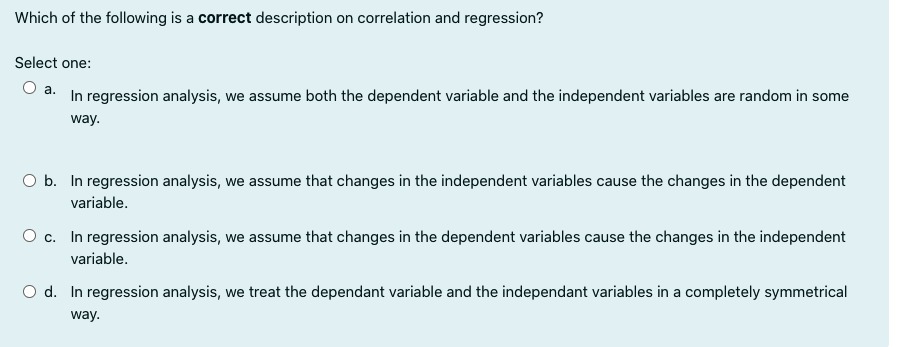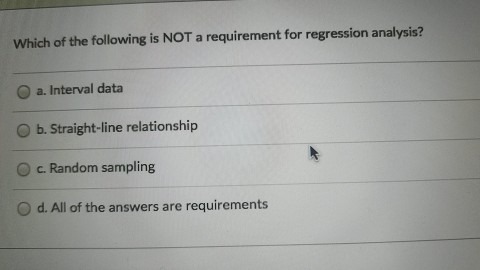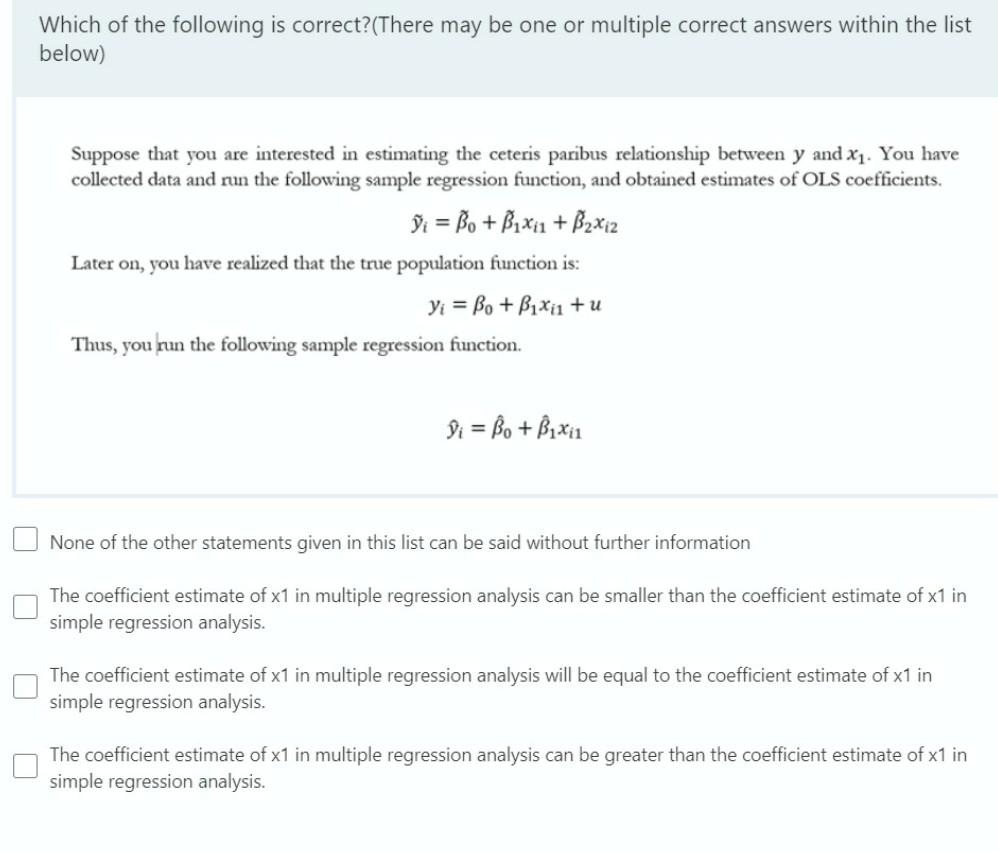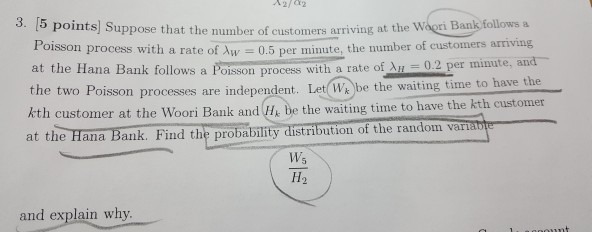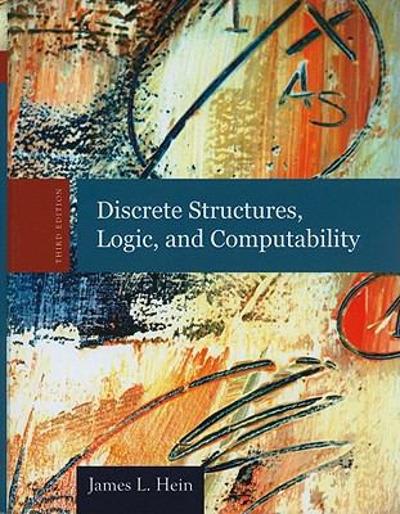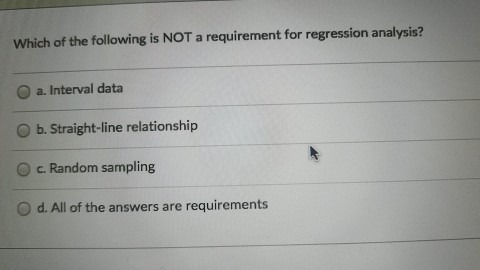
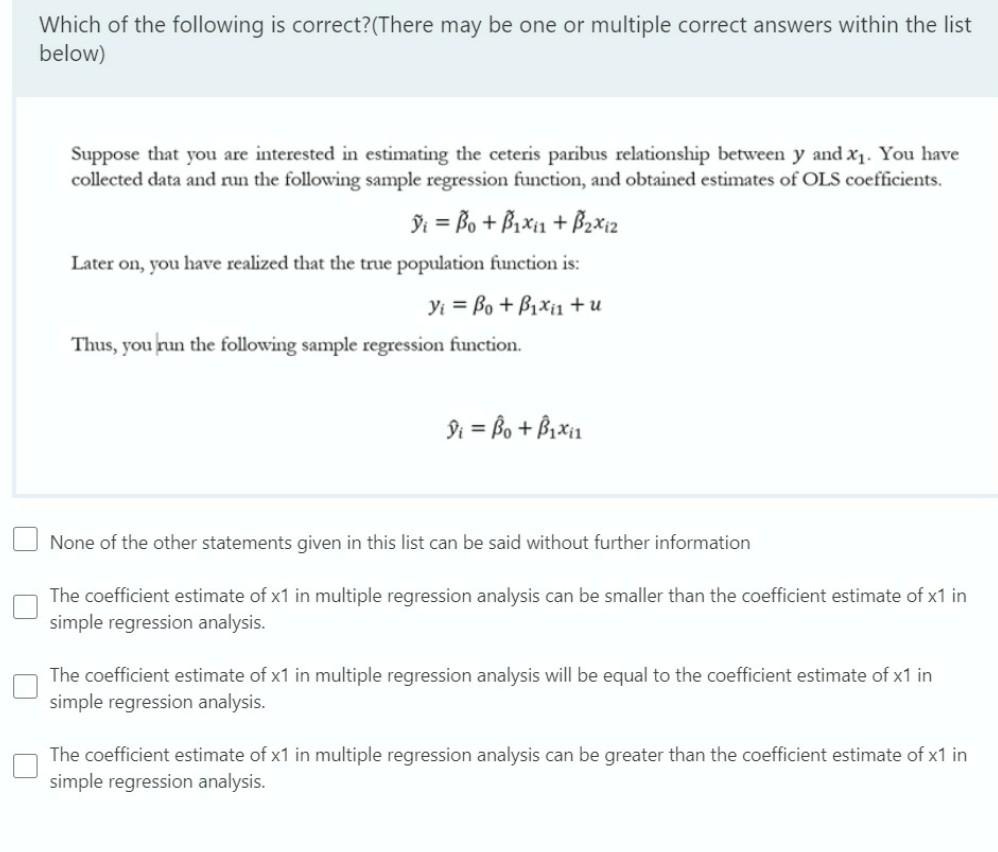
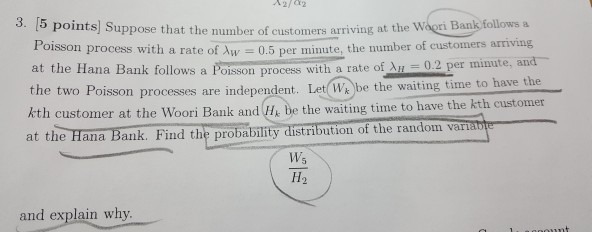

Question:1
Buses arrive at a bus station with i.i.d. interarrival times following an exponential distribution with intensity ?. Alice arrives at the bus station at a deterministic time t. a. (4pts) What is the expected waiting time for Alice until next bus comes? b. (6pts) Let ? be the time when the last bus arrived before time t. Show that t ? ? follows an exponential distribution with parameter ?. c. (6pts) Show that the expected interarrival time between the last bus which arrived before time t and the first bus which arrives after time t is 2 ? . Explain why it is different from the general expected interarrival time 1 ? .
?
Which of the following is a correct description on correlation and regression? Select one: a. In regression analysis, we assume both the dependent variable and the independent variables are random in some way. O b. In regression analysis, we assume that changes in the independent variables cause the changes in the dependent variable. O c. In regression analysis, we assume that changes in the dependent variables cause the changes in the independent variable. O d. In regression analysis, we treat the dependant variable and the independant variables in a completely symmetrical way.Which of the following is NOT a requirement for regression analysis? O a. Interval data O b. Straight-line relationship c. Random sampling O d. All of the answers are requirementsWhich of the following is correct?(There may be one or multiple correct answers within the list below) Suppose that you are interested in estimating the ceteris paribus relationship between y and x]. You have collected data and run the following sample regression function, and obtained estimates of OLS coefficients. Di = Bo + Bixn + 2x12 Later on, you have realized that the true population function is: Vi = Bo + Bixatu Thus, you run the following sample regression function. Di = Bo + Bixn None of the other statements given in this list can be said without further information The coefficient estimate of x1 in multiple regression analysis can be smaller than the coefficient estimate of x1 in simple regression analysis. The coefficient estimate of x1 in multiple regression analysis will be equal to the coefficient estimate of x1 in simple regression analysis. The coefficient estimate of x1 in multiple regression analysis can be greater than the coefficient estimate of x1 in simple regression analysis.-12/02 3. [5 points] Suppose that the number of customers arriving at the Woori Bank follows a Poisson process with a rate of Aw = 0.5 per minute, the number of customers arriving at the Hana Bank follows a Poisson process with a rate of An = 0.2 per minute, and the two Poisson processes are independent. Let( We)be the waiting time to have the kth customer at the Woori Bank and /, be the waiting time to have the kth customer at the Hana Bank. Find the probability distribution of the random variable Wa H 2 and explain why.Recall the Poisson process that we covered during the lecture. We showed that if earthquakes happen following a Poisson process, the time interval between two consecutive earthquakes is exponentially distributed. This also implies that if an earthquake just happened, the time of the next one (1) earthquake follows exponential distribution. Now, we want to generalize this result. Suppose that earthquakes near San Francisco happens following a Poisson process 2 and an earthquake just happened. Find the probability that in the next 5 years, there are less than ten (10) earthquakes




